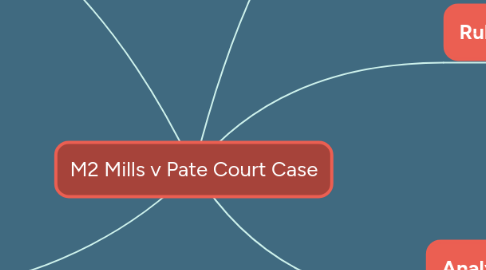
1. Issue
1.1. The issue in this case, is whether Dr. Pate could have provided more information about the risks and adverse events of the liposuction procedure that would have influence Ms. Mills' decision to have the surgery. Furthermore, the issue relates to whether Dr. Pate's representation did not conform to the quality of his services, given the outcomes of Ms. Mills' liposuction surgery.
2. Conclusion
2.1. The court applied the law under which the malpractice suit was filled. Thought the breach of express warranty claim cast doubt on Dr. Pate's representation of the quality of his services, the testimony of Ms. Mills alone was not sufficient to confirm a breach of a warranty claim.
3. Facts
3.1. Parties:
3.1.1. Joyceline MILLS, Patient and Appellant
3.1.2. Dr. John PATE, M.D., Physician and Appellee
3.2. What Happened
3.2.1. Ms. Mills, a patient filed a medical malpractice suit against Dr. Pate, a board-certified medical expert who performed a liposuction surgery on her abdomen, hips, flanks, and thighs. Ms. Mills signed a consent form and a permission form to perform the liposuction after she was allegedly informed of the risks and complications of the procedure by Dr. Pate. Ms. Mills' surgery resulted in skin irregularities, for which she had to go through two additional surgeries performed by Dr. Pate and Dr. Gilliland to reach a satisfactory body shape. Ms. Mills claims that the Medical Liability and Insurance Improvement Act (“the Act”) was broken because Dr. Pate did not properly warn her about the liposuction adverse events and obtain consent for the subsequent treatment required in case of failure of the liposuction procedure. Dr. Pate filed a no-evidence motion maintaining that Ms. Mills was informed of the risks and had no evidence to sustain her claims.
3.3. Procedural History
3.3.1. The plaintiff filed the medical malpractice lawsuit against Dr. Pate in the Court of Appeals of Texas, El Paso, on January 23, 2003. Ms. Mills' original petition was related to Dr. Pate's failure to disclose the risks of the liposuction procedure adequately. This original petition was amended by Ms. Mills to include a breach of express warranty. Dr. Pate filed a motion for partial summary judgment and no-evidence motion with regards to Ms. Mills' claims on both accounts. The trial court judgment favored the Appellee Dr. Pate. The court sustained the no-evidence motion filled by Dr. Pate. Ms. Mills appealed to the summary judgment concerning her claims.
